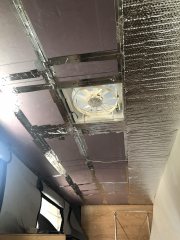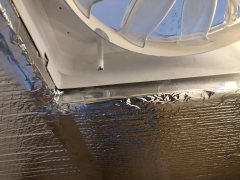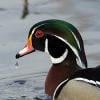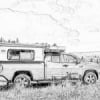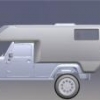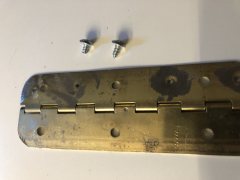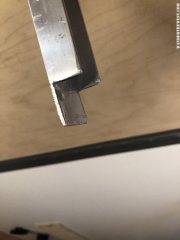OK, more Reflectix work on the ceiling. Once the passenger side was done and the fabric reattached (used more double sided tape and a few staples) I removed the few staples I had put on the driver's side and carefull pulled the fabric off of the double sided tape. I detached the middle too, so it would be exposed and easier to work with.
I then did lots of careful measuring to locate the wires that had to come through later. In hindsight, I could have made even more measurements. With the Reflectix, I lost the ability to "feel" the wires and existing screw holes in the roof. Finding them once the Reflectix and the fabric were back up required using the measurements to get within a 1/4" of the spot, and then using a thin needle to poke upwards until I found the holes.
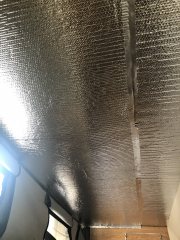
To make holes for the wires I used two different methods. Feel the wire and use the measurements, then cut the Reflectix with a knife, or use a hot soldering iron to melt a hole. In both cases, I then sealed the hole again with aluminum tape. I do NOT want air/water vapor leaking through my roof! I started in the middle of the camper and worked out to the edges to avoid puckers. I pulled HARD on the Reflectix before pressing it into the tape and adding a staple for good measure.
I spent extra time to seal up the fan area.
Here is the Reflectix with the wires found and taped up again:
Before reattaching the fabric, I added more double sided tape on the Reflectix along the driver's side edge. I started attaching the fabric in the middle of the driver's side edge... again, pulling hard to avoid sags/puckers and again pressed the fabric into the tape and added a staple.
As I went along, I made holes in the fabric for the wires with the soldering iron. The fabric has enough plastic fibers in it to melt VERY easily, and also to self-seal the edges so they don't fray. This is much stronger than slicing a hole in the fabric, which can then easily tear further along the cut.
(Sorry, no pic of that!)
I did snap a few shots of the parts where the new fabric meets the old. This is the driver's side rear corner. The "new" piece of wood that goes east/west hides the edge of the new fabric along the hinge, and covers where it meets the old fabric in the corner. Double sided tape under the wood strip (cut from a sheet of 1/2" maple plywood as shown in a previous post) in the corner area keeps it from pulling loose.
Similar pic of the passenger rear corner. I still need to trim that little bit of foil/fabric that can be seen peeking through at the very edge. That edge is also yet to get a wooden strip of its own... tomorrow?





